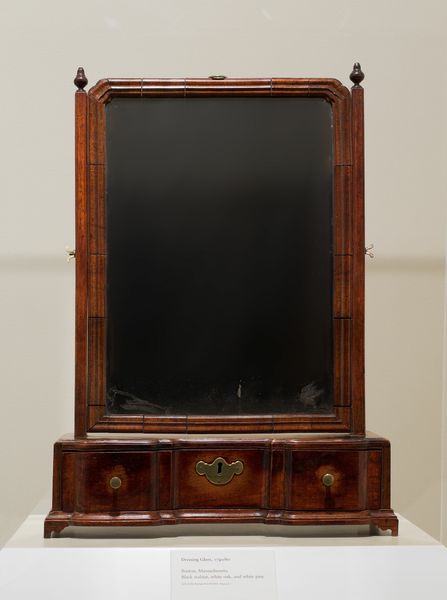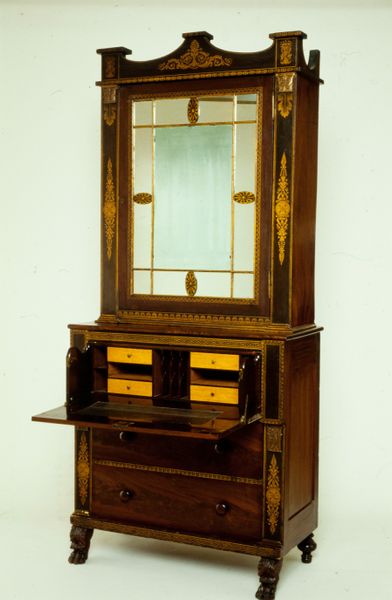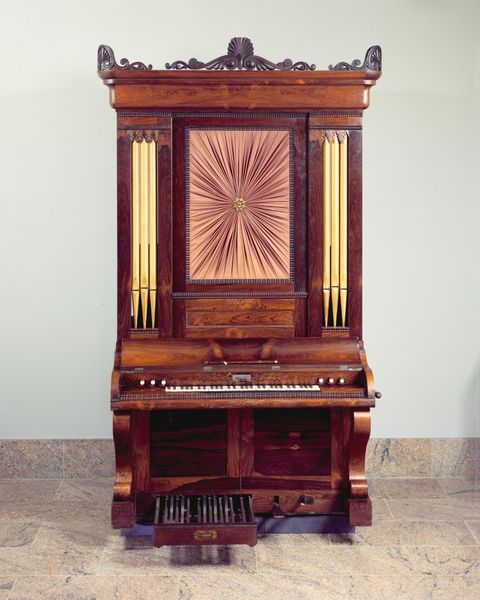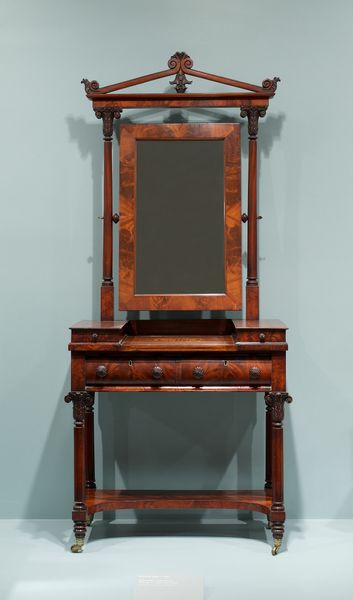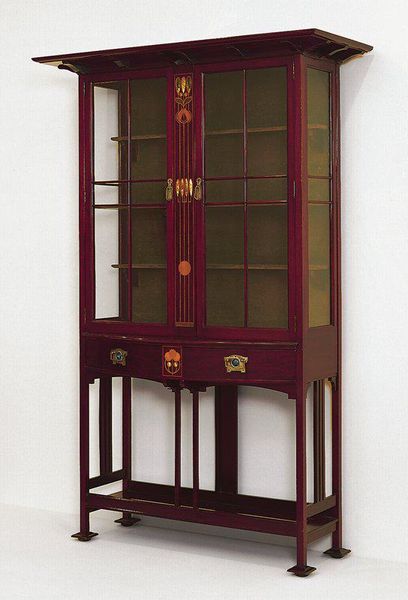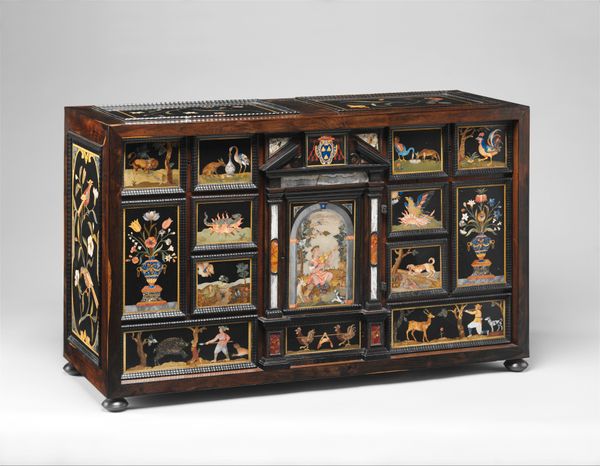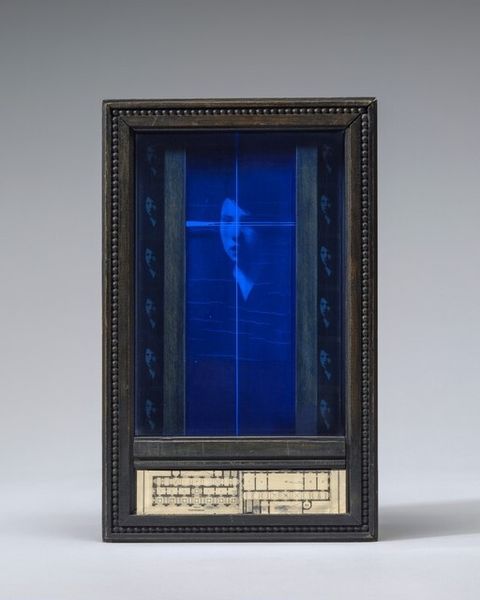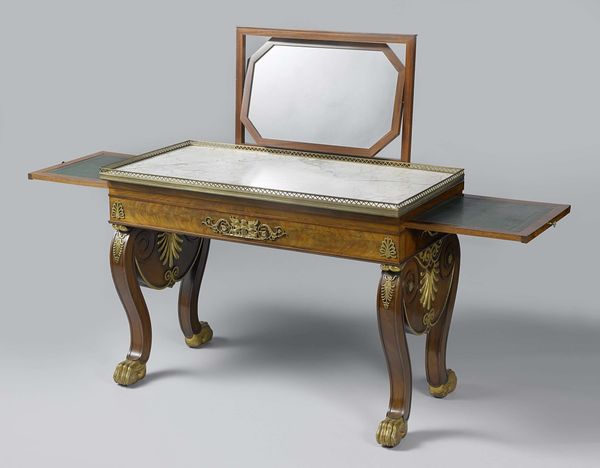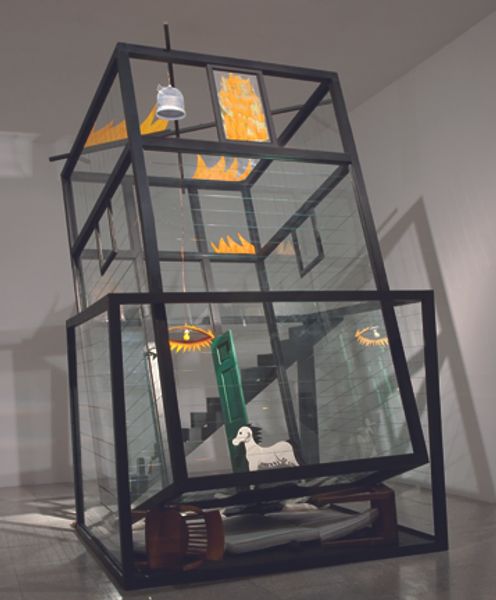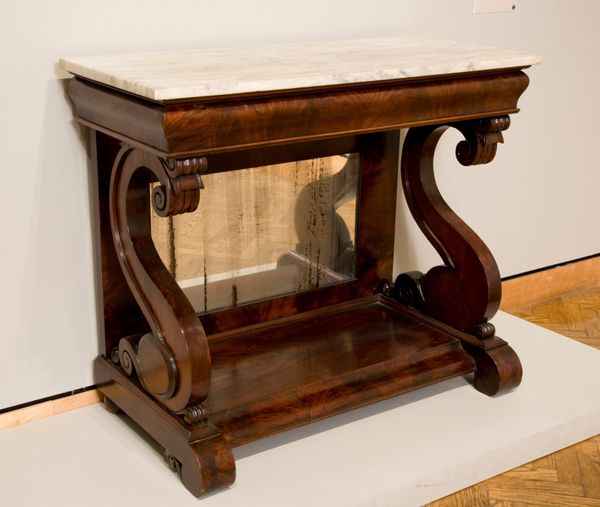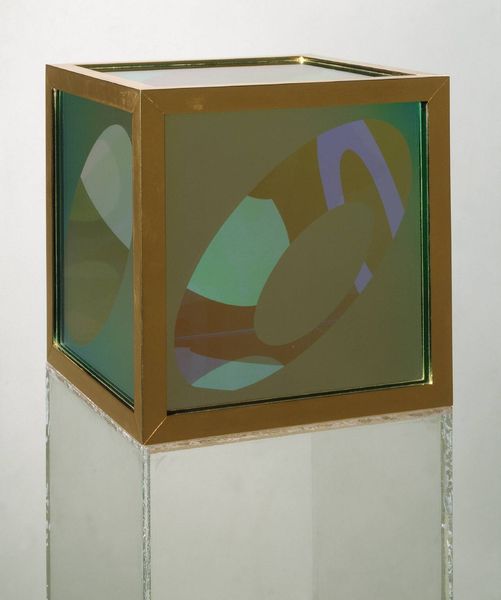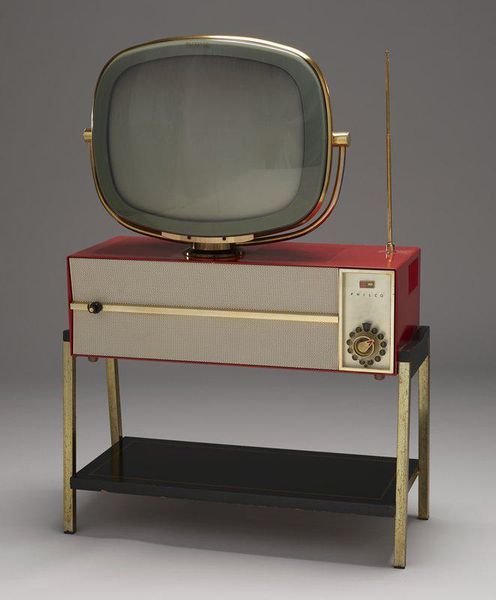
#
fluxus
Copyright: Nam June Paik,Fair Use
Editor: Here we have Nam June Paik's "TV is New Heart," created in 1989, a mixed-media installation. It's... unexpectedly monumental. All these old televisions are encased in what looks like an ornate cabinet or some sort of temple. It makes you wonder... what exactly is he trying to elevate? What do you see in this piece, from a historical perspective? Curator: Paik, as a media art pioneer, consistently challenged the role of television within society. Consider the socio-political context of 1989. Television was ubiquitous, a dominant force shaping public opinion. Paik isn’t just presenting TVs, but constructing a shrine to them. Think about the phrase “TV is New Heart”. He's suggesting television has replaced emotion, or become the central organ of contemporary life. The question then becomes: is he celebrating or critiquing this shift? Editor: So, you think he's exploring how television, mass media generally, has come to occupy this central, almost sacred place in our culture? But, like, doesn't that "new heart" still beat with the same old, often problematic narratives? Curator: Exactly! It's a deliberately ambivalent statement. This is where institutional critique comes in. Who controls the narratives broadcast? What impact do these narratives have on the collective psyche? The ornate framing further complicates this. By embedding these technologies in classical forms, Paik forces us to reconsider their authority. What are your feelings regarding the frame and what do you think it adds? Editor: The ornate frame and classical references adds a strange sort of elevated status. I guess I see this installation not as a celebration, but more as a question mark about media influence and access to truthful perspectives. Curator: Precisely. By using humor and technological innovation, Paik compels us to actively analyze the role media plays in constructing our realities, and really calls out the socio-political norms of the 80s. I learned that TV has always been at the front seat. Editor: It’s incredible how relevant his work still feels today, in an age of algorithmic news feeds. Food for thought.
Comments
No comments
Be the first to comment and join the conversation on the ultimate creative platform.
